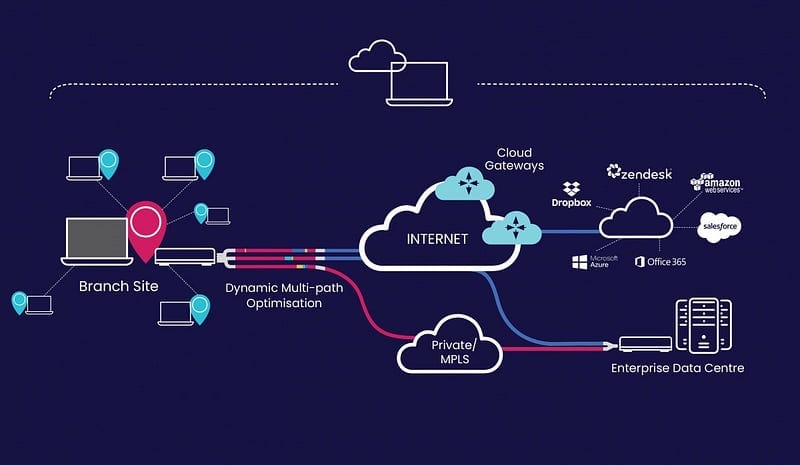Software-Defined Wide Area Networking (SD-WAN)
SD-WAN is a networking approach that utilizes software to dynamically manage and optimize the connections between geographically dispersed…

SD-WAN is a networking approach that utilizes software to dynamically manage and optimize the connections between geographically dispersed sites, such as branches, data centres, and cloud platforms.
By abstracting the underlying network infrastructure, SD-WAN allows for more flexible, efficient, and intelligent network traffic management across wide area networks (WANs).
Key Features of SD-WAN
- Centralized Management: SD-WAN solutions provide a centralized controller that allows network administrators to manage, monitor, and configure the entire network from a single interface. This simplifies network management and helps reduce the complexity associated with managing multiple remote sites.
- Dynamic Path Selection: SD-WAN can intelligently route traffic across multiple WAN links (such as MPLS, broadband, or LTE) based on application requirements, network conditions, and user-defined policies. This ensures optimal performance and minimizes latency and packet loss.
- Application Optimization: SD-WAN can identify and prioritize specific applications, such as voice over IP (VoIP), video streaming, and cloud services. This ensures critical applications receive the bandwidth and prioritization to perform optimally.
- Security: SD-WAN solutions often incorporate integrated security features, such as next-generation firewalls, intrusion detection and prevention systems, and secure web gateways. These security features protect the network from external threats and ensure data privacy.
- Scalability: SD-WAN can quickly scale to accommodate the changing needs of a business. Adding new sites, upgrading bandwidth, or modifying network policies can be done rapidly and efficiently without expensive hardware upgrades.
Advantages of SD-WAN
- Cost Savings: By leveraging low-cost broadband connections and reducing the reliance on expensive MPLS circuits, SD-WAN can significantly reduce WAN costs. Additionally, the centralized management capabilities of SD-WAN can lower operational expenses.
- Improved Performance: SD-WAN's intelligent traffic management and application optimization features help improve the network's overall performance, ensuring that critical applications and services run smoothly.
- Enhanced Flexibility: SD-WAN allows organizations to quickly adapt to changing business requirements by easily modifying network policies, adding new sites, or switching between WAN links.
- Simplified Management: Centralized management and visibility into the entire network simplify administration tasks and reduce the complexity of managing traditional WANs.
- Robust Security: Integrated security features help protect the network and ensure data privacy, making SD-WAN a secure business solution.
SD-WAN vs Traditional WAN
Traditional WAN architectures typically rely on proprietary hardware appliances and static routing protocols, making them rigid and challenging to manage.
On the other hand, SD-WAN utilizes software to manage and optimize network traffic dynamically, offering significant cost, performance, flexibility, and management advantages.
Follow me on Medium, LinkedIn, and Twitter.
All the best,
Luis Soares
CTO | Head of Engineering | Cyber Security | Blockchain Engineer | NFT | Web3 | DeFi | Data Scientist
#network #networking #wan #cyber #cloud #computing #connectivity #security #hardware #software #architecture #scalability



